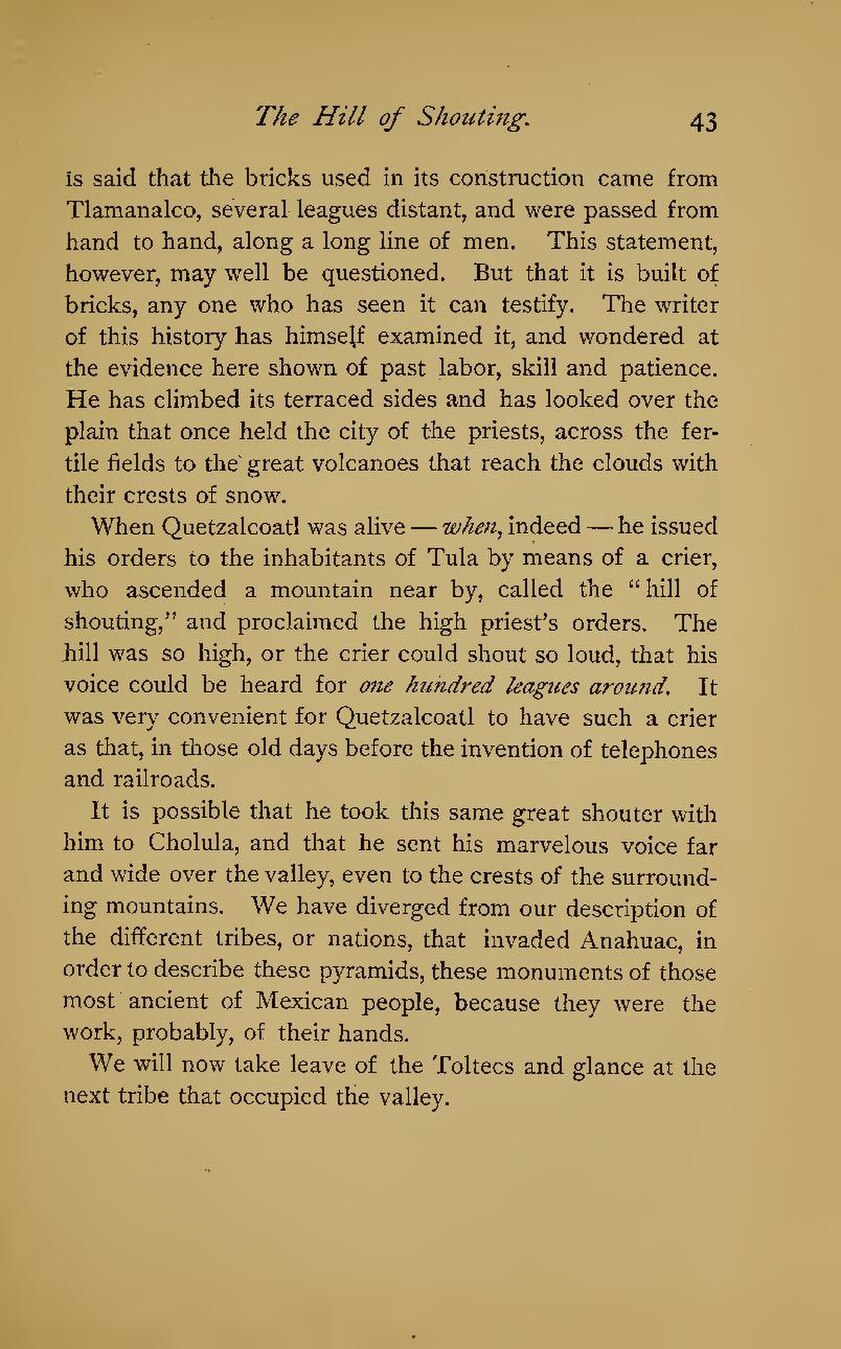is said that the bricks used in its construction came from Tlamanalco, several leagues distant, and were passed from hand to hand, along a long line of men. This statement, however, may well be questioned. But that it is built of bricks, any one who has seen it can testify. The writer of this history has himself examined it, and wondered at the evidence here shown of past labor, skill and patience. He has climbed its terraced sides and has looked over the plain that once held the city of the priests, across the fertile fields to the great volcanoes that reach the clouds with their crests of snow.
When Quetzalcoatl was alive—when indeed—he issued his orders to the inhabitants of Tula by means of a crier, who ascended a mountain near by, called the "hill of shouting," and proclaimed the high priest's orders. The hill was so high, or the crier could shout so loud, that his voice could be heard for one hundred leagues around. It was very convenient for Quetzalcoatl to have such a crier as that, in those old days before the invention of telephones and railroads.
It is possible that he took this same great shouter with him to Cholula, and that he sent his marvelous voice far and wide over the valley, even to the crests of the surrounding mountains. We have diverged from our description of the different tribes, or nations, that invaded Anahuac, in order to describe these pyramids, these monuments of those most ancient of Mexican people, because they were the work, probably, of their hands.
We will now take leave of the Toltecs and glance at the next tribe that occupied the valley.
